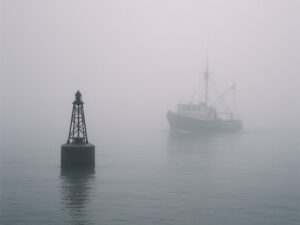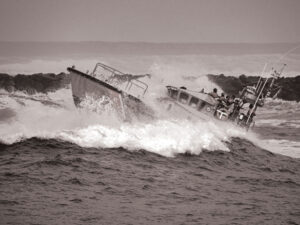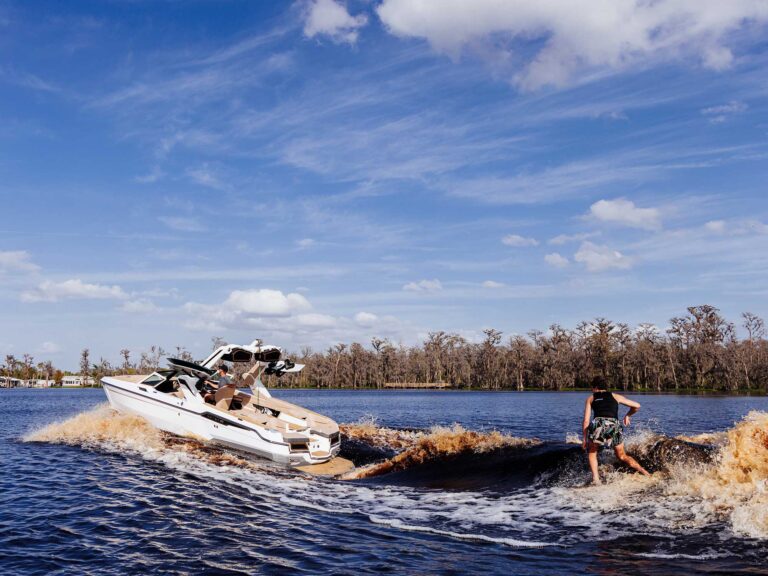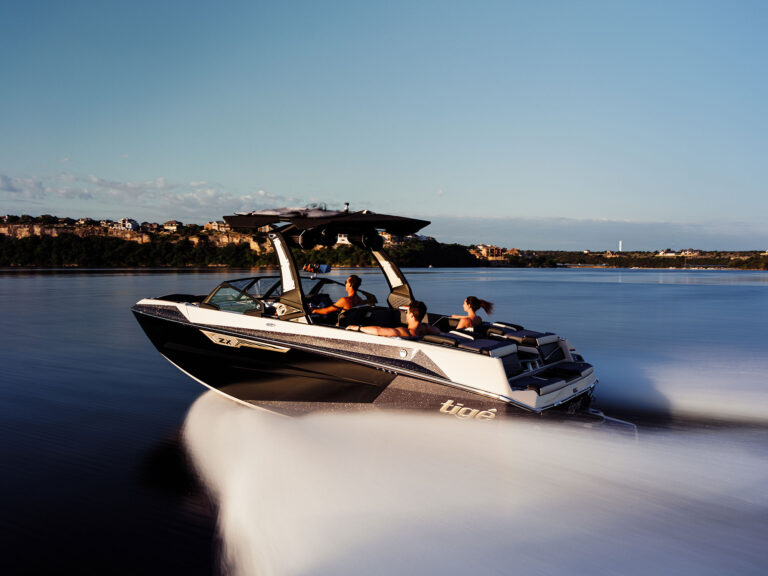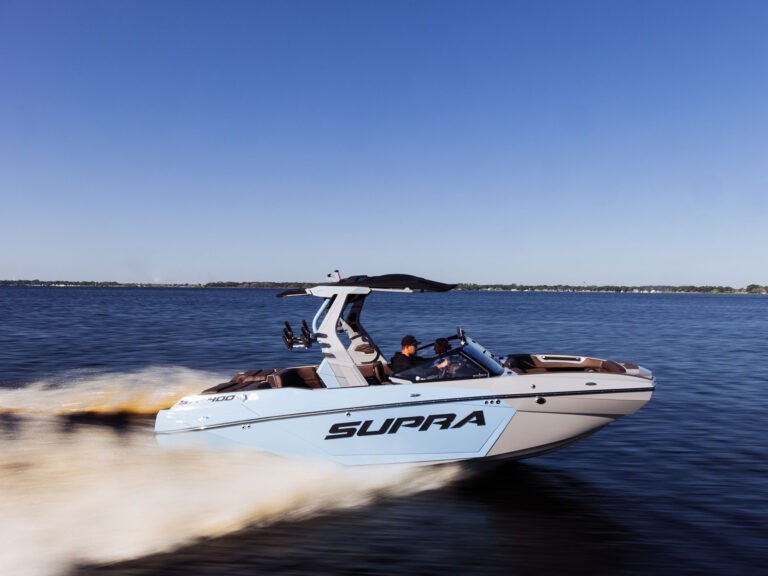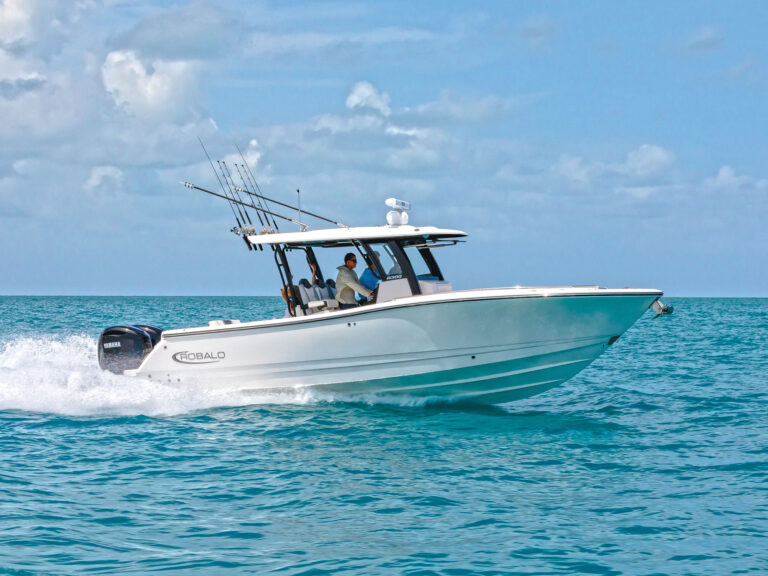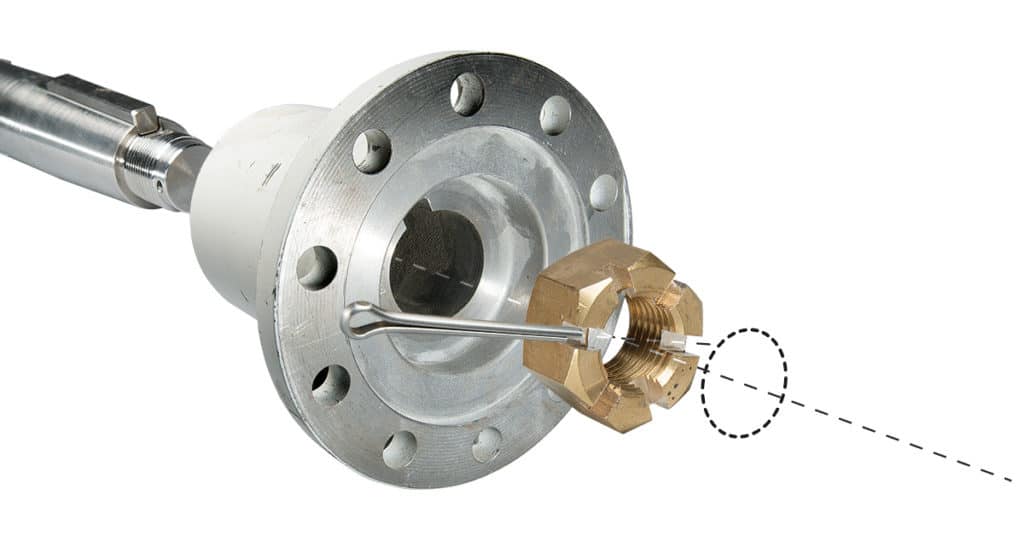
It might be a straight bore with a pin or set screws, or a tapered bore secured with a nut inside the coupling. Either way, the shaft, coupling and components are machined at the prop shop to fit together perfectly and are then labeled as a set. If assembly requires more than a solid whack from a soft mallet, something isn’t right. Capt. Vincent Daniello
The 15-foot Boston Whaler winding out the intricate reef opening was carrying a pilot who would guide me in. While waiting, I eased both engines into reverse to give the other boat time to get through. But instead of slowing the progress of the motoryacht I was captaining toward 8-foot breakers, the 80-footer turned its beam to the swells. The port shaft — which I’d find a few minutes later — slid from its transmission coupling and drifted aft against the rudder. This left me with one working prop and little steering a hundred yards off the Devil’s Backbone, a reef named for its curve along the coast of Eleuthera in the Bahamas and for all the souls it’s claimed over 500 years.
The fault lay hundreds of miles away where a mechanic improperly secured the shaft inside the coupling. But the blame for risking the boat and lives on board fell squarely on me. A week earlier, I noticed a 1/16-inch shiny band on that shaft at the back of the strut, but I failed to recognize that the shaft was already migrating aft. The lessons? Even when others do the job, understand the mechanical workings of your boat so you’ll know when something seems amiss, and then pay attention to those warnings.
Machinery can fail anytime. Allowing for that, I should have been farther from the reef while awaiting the pilot. U.S. Coast Guard recreational-boat statistics for 2014 show 255 accidents caused by mechanical failure. But it was seldom the breakdown that caused the 82 injuries and 14 deaths among those 255 — it was the events that followed.
Other Lessons Reinforced That Day in the Bahamas:
1. Danger comes quickly. Demonstrate how to use personal flotation devices before leaving the dock and be sure everyone aboard knows where they are stowed. Better yet, wear them.
2. Know how your boat handles on one engine. Using the bow thruster and backing hard on my working starboard prop, I swung the bow east and crept offshore.
3. Pick the appropriate route. Had I planned the longer run into Spanish Wells through the protected west entrance — avoiding the breaking reef — I’d have been diving a wreck on the Backbone that afternoon rather than nearly becoming one.
Wanted: Your Stories
Share your boating mistakes and mishaps so that your fellow boaters might learn from your experience. Send us your first-person accounts, including
what went wrong, what you’d do differently, your name and your city, to editor@boatingmag.com and use “ILAB” in the subject line. If your submission is chosen, we will send you a $100 West Marine Gift Card!



